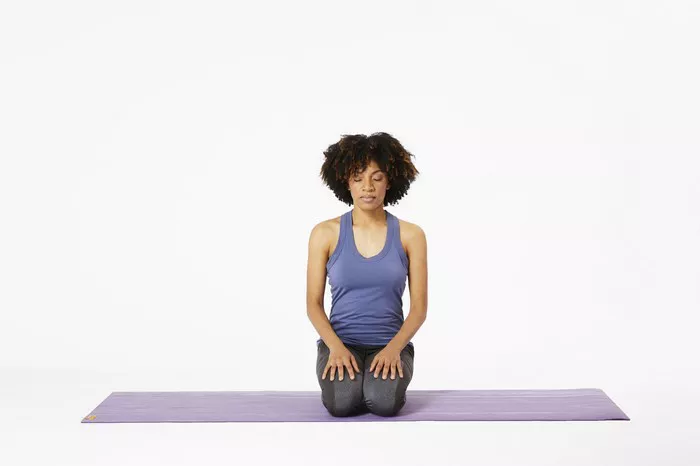In the vast expanse of yoga practices, Ujjayi Pranayama stands out as a powerful technique that combines breath control with mindfulness. Also known as the “Ocean Breath” due to its soothing sound resembling the waves of the ocean, Ujjayi Pranayama offers a multitude of benefits for both the body and mind. In this article, we delve into its origins, significance, benefits, step-by-step instructions, variations, scientific research and evidence, as well as precautions and contraindications.
Origins and Significance
Ujjayi Pranayama has its roots in ancient yogic traditions, dating back thousands of years. The word “Ujjayi” is derived from the Sanskrit word “Ujjayi,” which means “victorious” or “expanding.” It signifies a victorious state of mind achieved through mastery of the breath. Pranayama, on the other hand, translates to “breath control” or “extension of life force.” Together, Ujjayi Pranayama embodies the union of breath and consciousness, fostering a sense of expansion, strength, and inner tranquility.
In traditional yogic philosophy, the breath is regarded as a bridge between the body and the mind. Ujjayi Pranayama enhances this connection, serving as a tool to regulate the flow of prana (life force energy) throughout the body. The audible sound produced during the practice is said to resemble the gentle rhythm of ocean waves, symbolizing the continuous cycle of inhalation and exhalation, and inviting a sense of calmness and serenity.
Benefits
The benefits of Ujjayi Pranayama extend beyond the physical realm, encompassing mental, emotional, and spiritual well-being. Some of the key benefits include:
1. Enhanced Breath Awareness: Practicing Ujjayi Pranayama cultivates heightened awareness of the breath, allowing practitioners to deepen their connection with the present moment.
2. Stress Reduction: The rhythmic nature of Ujjayi breathing induces a relaxation response in the body, reducing stress, anxiety, and tension levels.
3. Improved Lung Function: By regulating the breath and increasing oxygenation, Ujjayi Pranayama strengthens the respiratory system and enhances lung capacity.
4. Detoxification: The controlled breath stimulates the removal of toxins from the body, cleansing the internal organs and promoting overall detoxification.
5. Strengthening of Mind-Body Connection: Ujjayi Pranayama encourages mindfulness and introspection, fostering a deeper connection between the mind, body, and spirit.
6. Warmth Generation: The heating effect generated by Ujjayi breathing helps to warm the body from within, making it an ideal practice for cold weather or during restorative yoga sessions.
7. Balanced Energy: Through the regulation of prana, Ujjayi Pranayama balances the energy channels (nadis) in the body, promoting a sense of equilibrium and vitality.
Step-by-Step Instructions
Practicing Ujjayi Pranayama is relatively simple, yet it requires focus, patience, and proper technique. Follow these step-by-step instructions to cultivate the Ocean Breath:
1. Find a Comfortable Seated Position: Sit in a cross-legged position or on a chair with your spine erect and shoulders relaxed.
2. Close Your Eyes: Allow your eyelids to gently close, turning your gaze inward.
3. Take a Few Deep Breaths: Inhale deeply through your nose, filling your lungs with air, and exhale fully, releasing any tension or stress.
4. Engage the Ujjayi Breath: Inhale slowly and deeply through your nose while slightly constricting the back of your throat, creating a whisper-like sound.
5. Lengthen the Exhalation: Exhale slowly through your nose, maintaining the gentle constriction in the throat, and continue to produce the soothing sound.
6. Focus on the Sound: Pay attention to the sound of your breath, allowing it to guide your awareness inward.
7. Repeat: Continue this rhythmic breathing pattern for 5–10 rounds or as long as feels comfortable, gradually increasing the duration with practice.
Variations
While the basic technique of Ujjayi Pranayama remains consistent, there are variations that can be explored to suit individual preferences and needs:
1. Three-Part Breath: Incorporate a three-part breath by directing the inhalation into the lower abdomen, ribcage, and upper chest successively, and exhaling in reverse order.
3. Dynamic Ujjayi: Practice Ujjayi breathing in conjunction with dynamic yoga sequences, syncing the breath with movement to create a flowing meditation in motion.
3. Extended Exhalation: Lengthen the exhalation phase of Ujjayi breath to promote relaxation and release of tension.
Scientific Research and Evidence
While much of the evidence supporting the benefits of Ujjayi Pranayama is anecdotal and rooted in traditional yogic teachings, scientific research has begun to explore its physiological effects. Studies have shown that practices involving slow, deep breathing, such as Ujjayi Pranayama, can activate the parasympathetic nervous system, eliciting a relaxation response and reducing stress levels (Jerath et al., 2006).
Furthermore, research published in the Journal of Alternative and Complementary Medicine has demonstrated that yogic breathing techniques, including Ujjayi Pranayama, can improve pulmonary function, increase oxygen saturation levels, and enhance overall respiratory efficiency (Bernardi et al., 2001).
While more research is needed to fully elucidate the mechanisms underlying the therapeutic effects of Ujjayi Pranayama, preliminary findings suggest promising outcomes in terms of stress reduction, respiratory health, and overall well-being.
Precautions and Contraindications
Although Ujjayi Pranayama is generally safe for most individuals, it is important to exercise caution and consult with a qualified yoga instructor or healthcare professional, especially if you have any pre-existing medical conditions or concerns. Some precautions to consider include:
1. Respiratory Issues: Individuals with respiratory conditions such as asthma or chronic obstructive pulmonary disease (COPD) should practice Ujjayi Pranayama under the guidance of a qualified instructor and modify the technique as needed to avoid exacerbating symptoms.
2. Hypertension: If you have high blood pressure or cardiovascular problems, avoid excessive breath retention (kumbhaka) during Ujjayi Pranayama, as it can elevate blood pressure levels.
3. Pregnancy: Pregnant women should approach Ujjayi Pranayama with caution, avoiding forceful breathing techniques and practicing gentle, mindful breathing to support maternal and fetal well-being.
4. Neck or Throat Injuries: Individuals with neck or throat injuries should avoid straining the throat during Ujjayi Pranayama and may opt for alternative breathing practices that do not involve throat constriction.
By honoring your body’s limitations, listening to its wisdom, and practicing mindfulness, you can safely explore the transformative benefits of Ujjayi Pranayama while minimizing the risk of injury or discomfort.
Conclusion
In conclusion, Ujjayi Pranayama, or the Ocean Breath, offers a profound journey into the realms of breath and consciousness. Through its rhythmic cadence and soothing resonance, this ancient yogic practice serves as a gateway to inner peace, vitality, and self-awareness. By embracing the teachings of Ujjayi Pranayama and integrating its principles into our daily lives, we can navigate the ever-changing currents of existence with grace and resilience.


















